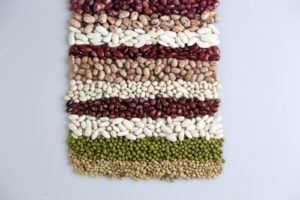
It’s that time of year again. When a chill is in the air and the leaves begin to change, it can only mean one thing: flu season is rapidly approaching. The Center for Disease Control, or CDC, recommends that everyone over 6 months of age get their flu shot before the end of October. The CDC also provides other simple steps to avoid getting and spreading the flu, such as washing your hands and staying home when you are sick. However, a study conducted on mice last year by researchers in Switzerland suggests that there may be another way to help fight off the flu: eat more fiber.
Our bodies fight the flu with specific types of white blood cells called T cells. T cells have a very specialized way of recognizing when another cell in our body is infected with the flu virus. When this recognition occurs, the T cells kill the infected cells. If this T cell response is efficient enough, it will prevent the spread of the virus, and we will never feel the symptoms of the flu. This is exactly the goal of the flu vaccine. Components of the vaccine train T cells to recognize the flu, so that when they encounter it, they are ready to take it out.
It is no secret that what we eat has a great impact on our overall health. A fiber-rich diet is generally considered to be very beneficial. Fiber helps the intestinal tract to digest and absorb nutrients from our food, but the benefits of fiber don’t end there. A diet high in fiber has been linked to lowering cholesterol and blood sugar, maintaining a healthy weight, and even living a longer life. In case we need just one more reason to increase our fiber intake, the 2018 study connected a diet high in fiber to protection against infection with influenza virus.

When researchers fed mice a high-fiber diet, they observed something quite remarkable. The high-fiber diet boosted the anti-flu T cell response, allowing the mice to control the virus more effectively than mice that ate a diet low in fiber. This happened through changes in the metabolism of the T cells, or how the cells use their energy. Put simply, if vaccines train the T cells to be prepared for the flu, fiber provides them with the best energy for the fight.
How exactly can fiber influence our immune system? It comes down to what happens to fiber once we eat it. Unlike other nutrients we get from food, we don’t actually digest the fiber we eat, but some of the trillions of bacteria that line our digestive tract do. In our colon, gut-friendly bacteria turn fiber into molecules called short chain fatty acids through a process called fermentation. As it turns out, these short chain fatty acids, such as butyrate and propionate, may be responsible for many of the health benefits afforded by a fiber-rich diet, including boosting the T cell response during flu.
Many Americans do not get their recommended daily amount of dietary fiber. Indeed, there may be no better time than the present, with flu season on the horizon, to introduce more fiber-rich foods like legumes, whole grains, and certain fruits and vegetables into our diets.
Peer edited by Justine Grabiec